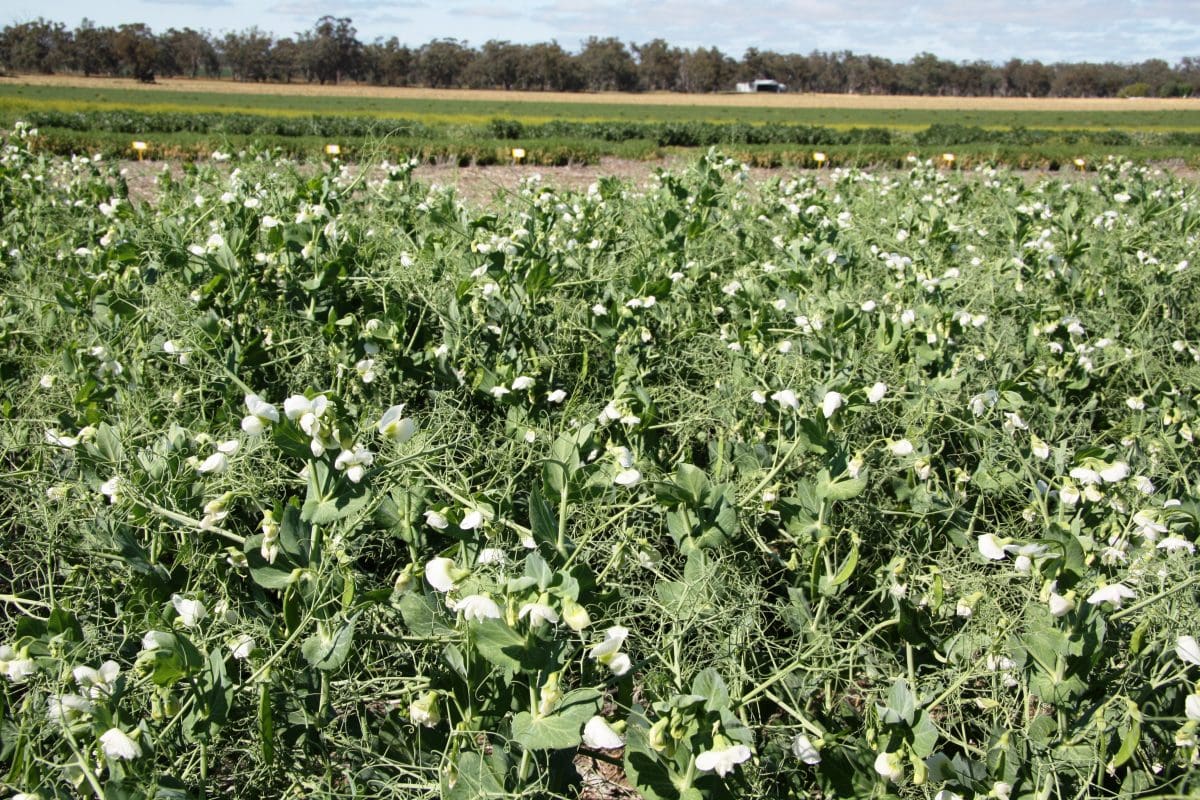
Australian field peas are in demand from China and other markets.
PRICES for Australian Kaspa-type field peas have risen by roughly 20 per cent in the past month as China books tonnage to help fill the deficit left by Canada’s drought-reduced exports of yellow peas.
Packers positioned to export containers out of Adelaide were paying around $500-$510 per tonne late last week, while Victorian packers are paying up to $550/t for product to be shipped out of Melbourne.
The market is providing some lively competition for the 2020-21 carry-out, and providing price direction on new crop.
Link Brokering director Dion Costigan said demand from China became evident a few months ago.
“There’s inquiry for peas now, and forward for December-February,” Mr Costigan said.
“There’s been a heap of old-crop done, and there’s new-crop booked as well.”
GeoCommodities broker Brad Knight said new business was being written at current levels, and the rise in prices reflected some short covering taking place to fill containers for nearby shipment, and new business.
“The market’s up significantly, and China has been supportive of it,” Mr Knight said.
“It’s mostly old crop, and a bit of new-crop has just started to trade in the Vic Mallee.”
Bright spot for container trade
Expensive and limited container passage to South Asia as a major destination for Australian pulses has limited the flow of trade this year.
However, services to North Asia are more affordable, plentiful and regular, as China looks to reposition boxes from Australia so it can export manufactured goods.
“The shipping lines have got space for boxes going to China; that’s the difference.”
The route is already carrying considerable quantities of containerised sorghum and some mungbeans from Australia.
Use in noodles, isolates
Trade sources say Australian Kaspa peas are supplementing mungbeans in China’s manufacturing of vermicelli-type noodles, and are also being used to make protein isolates.
In cost, insurance and freight (cif) terms, Australian Kaspas are now nudging US$550/t, up from around $505/t cif one month ago.
A similar jump looks unlikely.
“People are wanting $570 cif now, and the Chinese are pushing back at that,” one trader said.
“They’ve got to have peas because that’s what they make their pea-protein isolate from, and China normally buys 700-800,000t from Canada.
“They’re not going to get that this year because the Canadian crop was so small.”
| FIELD PEAS | 2018-19 | 2019-20 | 2020-21 |
| Bahrain | 0 | 48 | 16 |
| Bangladesh | 20525 | 13406 | 17779 |
| Belgium | 1280 | 1142 | 1206 |
| Chile | 12 | 0 | 0 |
| China | 5479 | 1525 | 24909 |
| Fiji | 2969 | 5500 | 6360 |
| Hong Kong | 253 | 184 | 161 |
| India | 9185 | 0 | 0 |
| Japan | 726 | 711 | 645 |
| Kuwait | 0 | 49 | 49 |
| Malaysia | 8321 | 6503 | 26264 |
| Mauritius | 0 | 69 | 0 |
| Morocco | 0 | 0 | 127 |
| Netherlands | 1400 | 1547 | 1041 |
| Philippines | 3882 | 2112 | 5177 |
| Singapore | 18 | 0 | 0 |
| South Korea | 0 | 0 | 132 |
| Sri Lanka | 10757 | 4983 | 5114 |
| Taiwan | 553 | 701 | 960 |
| UAE | 238 | 1343 | 0 |
| Yemen | 212 | 48 | 0 |
| TOTAL | 65810 | 39871 | 89941 |
Table 1: Australian exports of whole field peas for marketing years ending September 30 2019, 2020 and 2021. Source: ABS
Changing markets
In the marketing year ended September 30 2021, China on 24,909t and Malaysia on 26,264t accounted for 28 per cent and 29pc respectively of exports.
In the previous two years, Bangladesh was the biggest market by far, taking close to one third of total exports in both years, and close to double the tonnage of the next-biggest markets, Malaysia in 2019-20 and Sri Lanka in 2018-19.
India has in the past been a major market for Australian field peas, but its tariffs on them and chickpeas tied to its ample domestic supplies have shut the gate to volume exports from Australia.
Harvest under way
ABARES has forecast Australian production of field peas at 250,000t from 197,000ha, with South Australia pencilled in at 90,000t from 85,000ha the largest producer.
This compares with the field pea crop in Australia in 2020-21 of 294,000t from 209,000ha.

HAVE YOUR SAY